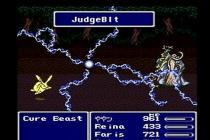The manufacturing industry is developing with high speed. Every year at trade shows, manufacturers showcase the latest technology to improve TVs and convince people it's time for an upgrade.
Evolution
The last few years have taken us from CRT models to thin TVs. There was a rise of plasma panels and their fall. Then came the era of high definition, full support for HD and Ultra HD. There were experiments with the popular three-dimensional format, as well as with the shape of the screen: it was made either flat or curved. And now a new round of this television evolution has come - TVs with HDR. It was 2016 that became a new era in the television industry.
Does a curved display make sense? In addition, a wider color spectrum will be included. “With these optimizations, films should be more natural and realistic,” says the expert. Better contrast and more natural colors would have been obtained, according to Peter Knaack, much earlier prints in devices.
Content Coming Soon
For example, in a 65-inch model, full resolution will only be displayed up to an observation distance of 1.25 meters. All that is in mind will only have the viewer at a distance of almost two meters. The highly bloated effect that viewers will literally be drawn into the picture only occurs, if at all, on exceptionally large TVs no larger than 65 inches and the impossibly short viewing distance for television. And: "A curved display is quite disadvantageous on television because reflections from light sources are more present than on flat displays and more disturbing due to the physical characteristics," says Knaak.
on TV?
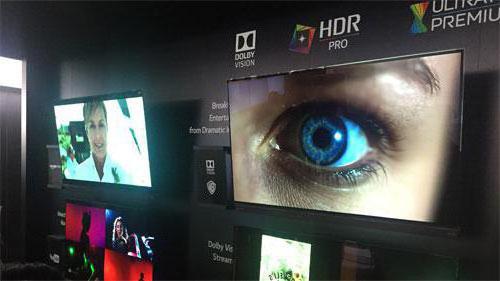
This abbreviation stands for "extended dynamic range". The technology makes it possible with maximum accuracy to bring the created picture closer to what a person sees in real life. By itself, our eye perceives a relatively small number of details in the light and in the shadows at one time. But after the pupils adapt to the current lighting conditions, their sensitivity almost doubles.
HDR: what is it?
For Christophe de Louv, the purchase decision depends on the application and the budget. For the user, this is primarily noticeable due to various user interfaces and various application offerings. but Operating Systems do not affect the functionality and functions.
You know it - you want to shoot a landscape, but either the sky is too light or the ground is too dark. Or even both at the same time. Here you connect multiple images with different exposure settings to a photo. Read more about this in this article.
Cameras and TVs with HDR: what's the difference?
![]()
In both types of technology, the task of this function is the same - to convey the world around with maximum reliability.
Due to the limitations of camera matrices, several shots are taken with different exposures. One frame is very dark, another is a little lighter, two more are very light. All of them are then connected with special programs manually. An exception is cameras with a built-in frame stitching function. The meaning of this manipulation is to pull out all the details from the shadows and light areas.
While today's cameras offer a much higher dynamic range than a few years ago, it's sometimes impossible to get everything in the picture that you can see with your own eyes. In such cases, it's best to take multiple shots of the scene at different exposure settings and then combine them into one shot. This will give you an image where the pattern is correct in the light and dark areas.
You just take the same scene with different exposure values and then put that series along with the photo. It's best if you use the bracketing feature on your camera, where three images with different exposure values are taken directly. If your camera does not offer this feature, select one of the options related to exposure compensation. To merge photos later, you need two or three shots.
Manufacturers have made HDR-enabled TVs focused on brightness. So, ideally, the device should be capable of outputting a value of 4000 candelas per square meter at an arbitrary point. But at the same time, the detail in the shadows should not be overwhelmed.
What is HDR for?

Another benefit is the tripod. The procedure is identical for both functions at the beginning. You confirm or correct your selection of photos and then move on to the exposure order. In this step, you determine which image is under, over, or correctly exposed.
Correct the exposure order if it is incorrect. If the photos are out of place, just move them to the right place with the mouse. Of course, you can also change the post orientation in the next step. Usually this is not necessary. You can then continue editing the image in the module editor, or simply save the image.
by the most important parameters for the quality of the displayed picture are color accuracy and contrast. If you put a 4K TV next to an HDR TV that has better color reproduction and increased contrast range, then most people will opt for the second option. After all, on it the picture looks less flat and more realistic.
Here you can choose one of two methods. The brightness method is suitable for eliminating differences in exposure. The contrast method enriches the image with colors and helps, for example, with small hazy shots. However, the goal is very individual, so you should always try which method is more suitable for the respective series of images.
Experiment and find out how individual parameters behave during a shift. Care must be taken when adjusting the settings - if you overdo it, the image looks very artificial. Individual settings work independently of highlights and shadows. Their meaning, however, is the same in both cases. The transition threshold determines the level of brightness from which the under- and overexposed image is copied into the "center" image. The transition boundary does not need to be distinctive, and processing is performed step by step.
HDR TVs have increased gradation, which allows you to get more shades of various colors: red, blue, green, as well as their combinations. Thus, the point of models with HDR is to display a more contrast and full-color picture than other TVs.
Possible problems

You can define the width of the transition using the transition continuity setting. Again, the difference at the edges of the original and the edited image will be clearly visible. Therefore you are still using the function mask blur. The last parameter is intensity, which determines the difference between the original image and the new image.
Try the Tone Mapping tool in the module editor. But you can't expect the dynamic range theme here. But that's unlikely to work - from a bad picture, you can't just make such a good picture. So work carefully with this editing tool.
In order to fully enjoy all the advantages of technology, unfortunately, you need not only TVs with HDR, but also content that will match the technology. In principle, TVs with an extended dynamic range of the image are already doing quite well. The brightness of the models has been doubled, and the illumination has become local and direct, that is, different fragments can be highlighted with different brightness in one frame. with HDR is not exactly cheap. Its cost is about 160 thousand rubles. This model - sony tv. With HDR, there are 55-inch and 65-inch screens. Unfortunately, budget models have insufficient peak brightness, and the backlight in them does not regulate arbitrary areas of the matrix. They also have a very modest number of transmitted shades of colors.
Who needs HDR mode and when
Download for free and test software for 30 days. This text is a translation. You may know this designation as a feature your local dealer advertises for a TV - meaning that this TV may have more dynamic range than traditional TVs.
"Dynamic range" refers to the difference between the darkest and brightest parts of an image, which can represent a single device while still being able to distinguish between different sounds. For example, if you record the interior so you can see what's in the room, the sunny outdoor area seen through the windows looks overexposed and washed out. However, if the image is exposed to outdoor lighting, the interior appears too dark. You probably know this from practice.
The difficulty with using old models is that the effect can be the opposite of what the director intended when shooting his creation. After all, together with the colorists, a color scheme was developed, and the frames were painted using an extensive palette of colors provided by a special standard in cinema. Previous TVs with this standard do not work, as they are not able to display some shades. That is why television versions of films look more pale than they should.
The reason for this is that the difference between the brightest area and the darkest area is too large. For this example, let's assume that we can expand the dynamic range arbitrarily so that the brightest areas are not washed out and completely white, and the darkest areas are not noisy and completely black. The more you make this area, the more realistic the image will be because it gets closer to the area that our eye can perceive.
Cons of HDR mode
When considering real objects, the dynamic range is extremely large. The human perceived dynamic range is limited to about 30% of the actual natural area, but can be enhanced by student adjustment. This is already a significant order.
The new HDR-enabled TVs can change the color scheme in any way they want, using their own algorithms that are unaware of the director's vision. For this reason, the creators came up with a technology in which, together with the video signal, special metadata is transmitted containing information with algorithms for changing the picture for TVs with the HDR function. Now the device knows where to lighten and where to darken, as well as at what points to add some kind of tint. And if the TV model supports such features, then the picture will look exactly the way the director wanted.
light and color
On the other hand, recording devices such as cameras are designed and manufactured in terms of dynamic range based on old standards from the days of still cameras. As a result, details are lost in the erasure of whites and noisy blacks. The respective content has been compiled on the assumption that they are played on CRT monitors.
Scenes with low lighting and backlighting
Correctly parsed areas are merged and the brightness range is compressed in this way. This prevents loss of light and shadow pattern and creates a realistic effect - similar to direct viewing with the human eye. While loss of detail in the brightest and darkest areas is avoided, the actual dynamic range of the image itself is not expanded.
Content Coming Soon
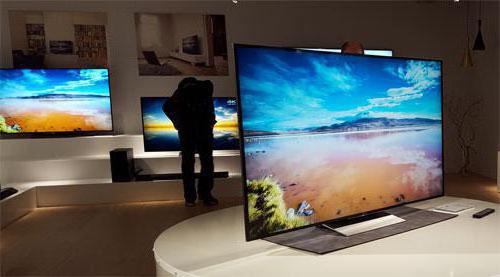
Currently, HDR TVs have a negligible amount of content. So, only a few titles are provided by online video services, and the last episode of the Star Wars movie was filmed and edited in a format similar to HDR. Because of this, the opinion may form that there is no point in buying TVs that support high dynamic range.
High contrast scenes
High-contrast scenes are more impressive, like a sunbeam falling into a dark room, and scenes like sunsets are incredibly realistic despite being played on your TV in the living room. This allows the production of contrast similar to human visual perception.
How do I know if my device has HDR?
Instead, my prevailing impression was that the shadows and highlights were realistic. Because the dynamic range was so wide, even subtle details were rendered correctly, providing incredible depth to the presentation on screen.
However, it is not. There are companies that provide the ability to convert video content to pseudo-HDR. Of course, this is not done by pressing one button, which is instantly automatic mode improve the image without any outside help. But there is a set of utilities that will greatly facilitate the work associated with restoring the color scheme conceived by the director and colorists. And this means that over time, the volume of high-quality content will increase.
It seemed realistic, as if the depicted objects were actually there. Scenes like these, with a combination of dark shadows and bright highlights, are usually hard to see. There are also TVs that process these signals but have relatively low brightness and low contrast. Of course, the higher these values, the more realistic the picture, but for some reason they are still not transparent for many TVs.
The catch is still that these and other requirements are high enough that certified devices are almost always expensive. With a higher bit depth of 12 bits, the goal is to create more realistic images with more presence.
HDR Options
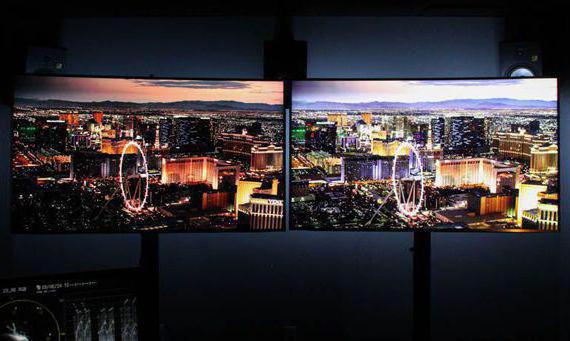
As with previous HD and Blu-Ray technologies, there are several opinions about how things should be implemented. Therefore, HDR was divided into formats. The most common is HDR format 10. It is supported by all HDR TVs. IN this format the entire metadata is attached to the video file.
More beautiful and realistic - five factors for better picture quality
More and more TVs support the standard and long awaited players currently on the market, so the standard will spread. Let's take a look at the biggest advances in these technologies for more realistic images. An image is made up of horizontal and vertical pixels.
All colors reproduced by the device. The color is out of gamut if the device does not have that color. Five factors for the best image quality. As already mentioned, with hardware advancements in TVs and other displays, image data taken by cameras can be displayed without any loss. This creates the basis for more realistic and beautiful pictures.
The next option is Dolby Vision. Here each scene is processed separately. This makes the picture look better. In Russia, this option is supported only by TVs from LG. There are no players with its support yet, since modern models are weak, and their processors cannot handle such a load. Owners of models with HDR10 with the release of updates will receive video processing close to DV.
How HDR works
Local dimming allows you to precisely adjust the brightness of the backlight to reproduce scenes with higher contrast. However, local dimming technology tends to cause ghosting in areas with a high dark light difference, as shown on the left.
In addition, areas with a strong light-dark difference with halos, i.e. washing out the contours of bright areas with light exposure in areas that should be dark. Although these imperfections may be minor in pure reproduction ads. For a reference monitor for production, they are certainly undesirable.
Requirements
In 2016, HDR TVs began to hit the market in droves. Almost every 4K capable device can understand this format. But, unfortunately, understanding is one thing, and displaying it correctly is another.
The ideal option is a TV with an OLED matrix and support for 4K, which is able to make any pixel as bright as possible or darken it. Also suitable are models with LED carpet backlighting, which individually or in groups adjust the brightness of their matrix areas.
They convince with still and moving images thanks to their high color stability. Of course, there are other steps in the post-production process from capture to editing to compositing that don't require this. high level reproducibility. This ratio is commonly referred to as the gamma characteristic. When playing back images, images with low gamma, whitish images, and high gamma values result in high contrast images.
Because the image that the viewer sees is only as good as the weakest link in this production chain. Many technologies already exist to optimize image quality. Thus, even in production, many image details disappeared in dark areas or could not be fully transported due to the smaller color gamut. In practice, this means that the displayed white and black levels are now much more intense and cover a wider range: whites look even whiter and blacks look even blacker.
Update
If your TV supports HDMI 2.0 technology, then there is a very high probability that in the near future you will receive software update to a new standard that is needed in order to transfer metadata. These two standards are fully compatible physically. The only difference is in the way software processing video stream.
How can I get this update if it did not come automatically? You need to go to the TV settings and select "Support". There should be an update option here, when selected, you will need to confirm the action and select network boot. Then the system will find new firmware and prompt you to install it.
Output
As mentioned at the beginning of the article, more people will choose a full-color image, rather than a high-resolution image. This is quite logical. After all, a lot of pixels is undoubtedly good, but even better when the pixels are good. The list of TVs with HDR support is still small. LG, Sony and Samsung have such models.
The development of technology seems to be much more promising than the race for resolution. At recent television shows, new models have been announced that should not only support highest resolution, but also give high brightness, as well as demonstrate certain levels black and cover a large number of shades. It should be noted that the HDR format is declared by default in many models that will be released in 2017. The problem may lie only in the standards. Content producers and TV producers need to solve it, and this year, apparently, will be dedicated to just that.
Thus, we found out what HDR is on a TV, what this technology is for, what advantages and disadvantages it has. Of course, today it is impossible to strongly recommend TV lovers to switch to new models, since the technology is still at the development stage. But, knowing the current pace of development, we can say with confidence that in a year HDR will reach a qualitatively different level and more and more people will start purchasing TVs that support an extended range. By this time, content producers will be able to produce a large number of films and series in HDR format, and watching TV will bring even more to lovers of beautiful pictures.
Progress does not stand still, and over time, more and more technologies appear that make life easier for the owner of various devices and increase his level of satisfaction with them. One of them is relatively new technology HDR is rapidly gaining popularity.
HDR: what is it?
HDR ( High Dynamic Range, translated from English as “high dynamic range”) is a technology for capturing images and videos in a higher range of brightness. It allows you to bring the resulting picture as close as possible to what a person sees with his own eyes in real life, that is, it helps to maintain its authenticity. In essence, the technology combines several shots, which would require different exposures to capture high quality, into one, highlighting each object.
For example, let's say you want to photograph a fountain on a sunny day. A bright sky in the background can get in the way, because the fountain will look either too dark or too light. For this, there is HDR, which in this case will help to take a photo in which both the fountain and the sky retain their inherent brightness in life. This is how the technology works in cameras, but it is applied not only in them. You can find it on TVs and some other devices.
In the art of photography, technology is needed to emphasize and highlight all the details. That is, it should make shadows lighter and highlights darker. HDR function shooting is present in many smartphones and professional cameras. It works in such a way that several versions of the same photo, but with different exposure levels and different exposures, merge into one. Before the advent of automated HDR technology, some photographers "merged" photos according to the same principle manually, taking several shots with different brightness and combining them.
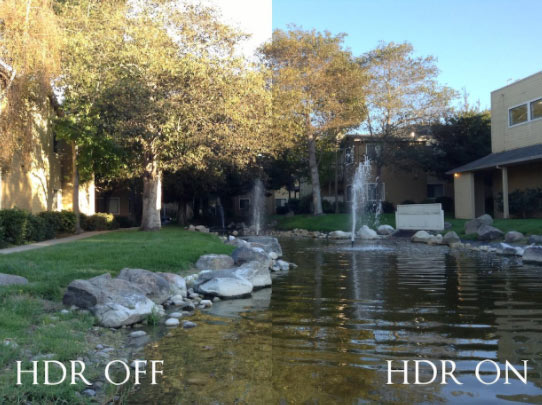
HDR feature is now built into many phones. When shooting, you only need to activate it, and the camera will do the rest. It should be noted that capturing pictures in this mode takes longer than in normal mode. If the technology is not available on the smartphone itself, there are many applications that allow you to bring it to the device.
The HDR mode is well suited for shooting in low light. It should not be used to capture moving objects. The camera during shooting must be held firmly and evenly so that it also does not move. Since the camera is simultaneously taking a dark and bright exposure of the same object or landscape when the technology is active, the object itself cannot be changed. It should be noted that not always photos taken in HDR mode are better than usual. Sometimes they can look unnatural, so it will not be superfluous to save both a photo taken using the mode and a normal one. Also HDR shooting sometimes it can degrade the quality of the finished photo.
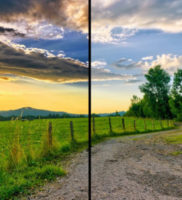
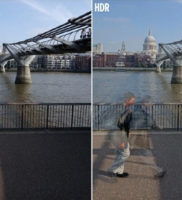
The technology today is also supported by displays. While there are quite a few HDR TVs these days, HDR is still relatively rare in smartphones. Those few models that have acquired support have better contrast and color reproduction, higher brightness. Appropriate content looks best on them, but non-HDR footage also looks better. Such screens make images brighter and more saturated. However, due to the fact that when using a smartphone we often move around, changing the lighting and viewing angle, it is sometimes difficult to appreciate all the features and benefits of a display with this technology.
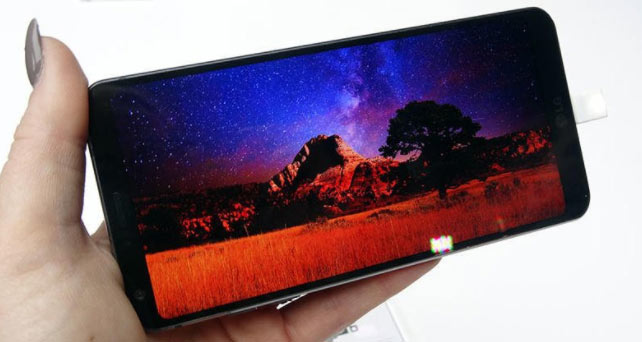
A smartphone screen must have a peak brightness of at least 540 nits to have the technology, but this has a negative effect on time. battery life devices - it is discharged much faster than models with conventional displays. Therefore, it is logical that when introducing technology, it is desirable that the smartphone has an impressive battery capacity, and also supports. A higher brightness range, in turn, guarantees more high quality HDR. The technology offers many advantages when viewing images and videos, so it is possible that such screens will become standard on smartphones in the future.
task before HDR technology is the same in phones and TVs. It is needed to make the image more harmonious, and its color content - more diverse and close to reality. However, the principle of operation of technology in different devices is somewhat different. If HDR in cameras is largely aimed at image detail, then in TVs it is mainly aimed at improving colors.
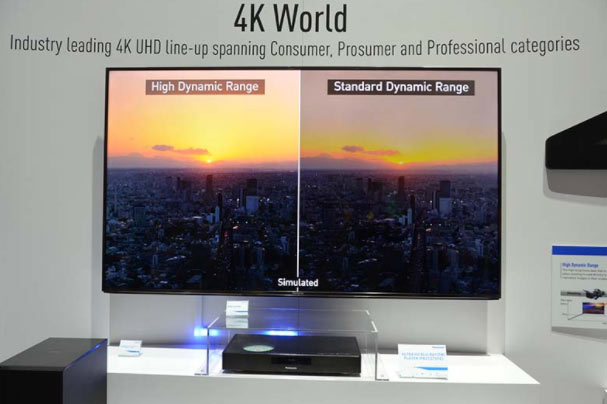
In 2016, various companies began to produce HDR TVs in huge numbers. Such TVs are focused, first of all, on optimizing the brightness of the image. They differ in more perfect, in comparison with other models, color reproduction and a higher contrast range. They are capable of transmitting a huge number of different shades of various colors and halftones. This makes the picture on the screen more voluminous and pleasing to the eye, because it begins to look more realistic. The technology itself in TVs has several separate formats, the most popular of which is HDR10.
Of course, it's not always enough for a TV to support HDR. To fully enjoy the benefits of this format, the content you are viewing must match it. Though HDR TVs and show any image in high quality thanks to higher brightness and improved backlighting, ideally the video itself should also support HDR. There isn't much content like this at the moment, but it's growing fast.

Almost every 4K TV now supports HDR. They can not be called budget options, but they are well suited for people who are very important image quality and a beautiful, rich picture. The most inexpensive models may not fully perform their functions, as they often do not have sufficient peak brightness.




